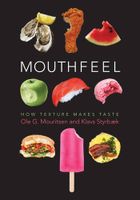Advertisement
Playing Around with Mouthfeel
Appears in
By Ole Mouritsen and Klavs Styrbæk
Published 2017

Whenever we prepare food, we put our own distinct stamp on it so that it has a particular texture and, with it, mouthfeel. This holds true both in home kitchens and in industrial plants. Our most obvious way of doing this is by using heat, which, after all, is the basis of the culinary arts.
Transforming the properties of raw ingredients to achieve the desired texture and preserving it until the food is about to be eaten can be challenging. If prepared commercially, the food might need to be transported and may be kept on supermarket shelves for a long time. It is also necessary to take into account the changes that occur in the final stages of preparation. And in all cases, it is important to make allowances for what happens when the food goes into the mouth and mouthfeel comes into play. Here the texture is affected by temperature, saliva, enzymes, and the way in which we chew.

